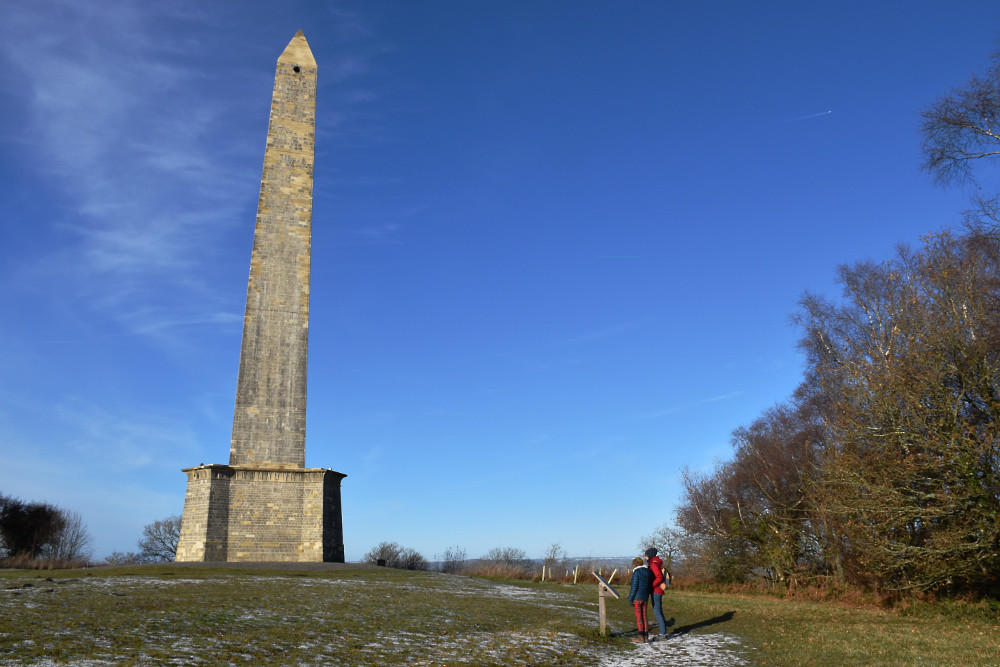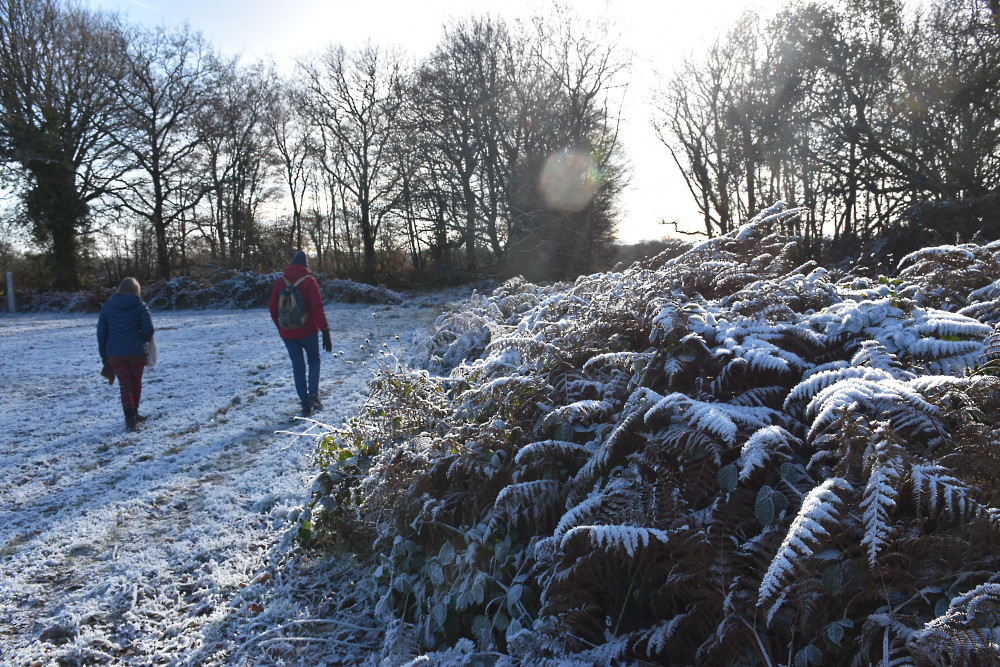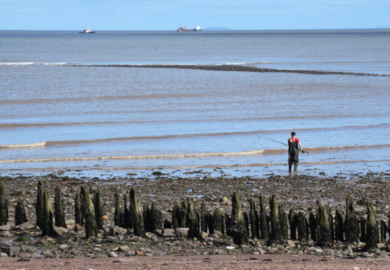Some thirty or more years ago, our friend took us on a walk to ‘the obelisk’, one of her favourite places, that stood somewhere in the vicinity of her home in Hay-on-Wye. It was a place she had apparently visited often, not that you’d know that from our excursion…
“I think it’s this way.”
Jo strode confidently through a gate and proceeded to cross a large field. We trailed behind, unconvinced of the veracity of her leadership. We’d been looking for the mysterious obelisk for over an hour and had aborted several routes so far. Pushing through the tall grasses, leaving a cartoon-style avenue in our wake, we reached the far side of the field.
“Hmm, I’m not sure this is right.” Jo stood and looked around while we sighed noisily and rolled our eyes behind her back.
“Stay right where you are!”
A loud, angry voice boomed across the landscape, and we all turned to see a purple-faced farmer brandishing a stick in the air and stomping towards us.
“I’ve just watched you tramp all the way across my field! Who are you and where are you from?!”
“I live in Hay,” said Jo, her neck blossoming into pink rosettes.
“Bloody townies!” He snorted, “I’m sick to death of you people thinking you can walk anywhere you bloody-well please!”
For the next five minutes he ranted and raged at us, or more accurately at Jo and Jack. After the first couple of sentences, I turned on my heel and walked away. I’d heard enough.
We never found the obelisk.
Fast forward to Somerset in early December 2022 and we took Jo to visit an obelisk that would struggle to camouflage itself pretty much anywhere in the UK.
Wellington Monument
Standing 53m (174 ft) on top of Wellington Hill on the edge of Blackdown Hills, the Wellington Monument is the tallest three-sided obelisk in the world. And a magnificent specimen it is.
When, in 1815, the idea to build a tribute to the Duke of Wellington and his victory at the Battle of Waterloo was first mooted, a competition was held to find the architect. Thomas Lee Jnr’s design for a cast iron statue atop a three-sided plinth, was declared the winner and work began on the structure which was intended to stand 43m (140ft) high from base to tip.
Dogged by a lack of funding, the project ground to a halt in the 1820s having got no further that the plinth and standing a paltry 14m (45 ft) high.
A Doomed Project
In the late 1840s, the Wellington Monument was struck by lightning – twice – and had to be extensively repaired. By this point, the original design had been abandoned on the grounds it was too expensive, and the obelisk plinth was upgraded to the finished design. Accordingly, in 1892 it was elevated to the height it is today.
Unfortunately, the obelisk was proving to be something of a doomed project and perpetually in need of repair. When the National Trust took over management of the monument in 1934, they had to repair it every 10 to 15 years, a task that was clearly unsustainable. By 2018, the structure had deteriorated to such an extent that it had become critical.
It was time to take a closer look at what lay beneath…
A scientific approach
In 2018 the National Trust carried out extensive technical surveys and analysis on the structure to try to ascertain what was causing the problems. They found major construction disparities and realised it would take a great deal of work to ensure its future.
With an estimated cost of more than £3 million needed, a campaign was launched to raise the funding. Donations were given from multiple government agencies, local government funds and from Borough Councils. Local communities in Wellington and Somerset put in place a raft of creative initiatives, including exchanging some of the smaller original stone fragments for donations.
With funds secured, work on the project began in 2019.
Repairing the Wellington Monument
It took 10 weeks to construct the 8 miles of scaffolding poles, over 500 mechanical ties, and 344 metres of spiral rods required to hold the stonework in place and minimise movement in the structure.
Over the course of the repairs, 1508 new stones had to be added, each one hand-tooled by experienced stonemasons. The pyramidion, the triangular top section, had to be completely replaced with only the original capstone surviving.
On Thursday 26th August 2021, the project was officially declared complete in an opening ceremony which ended with the illumination of the structure. Now, you can once again climb the 232 spiral steps that ascend the inside of the obelisk and emerge, to gasp-inducing views across the Blackdowns to the Quantocks and Exmoor.




